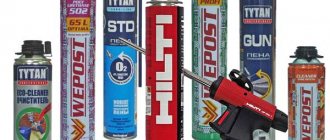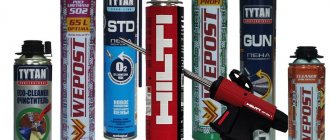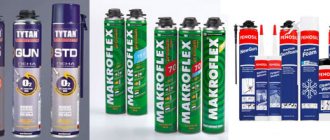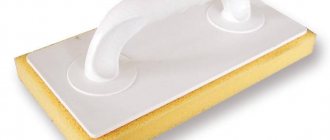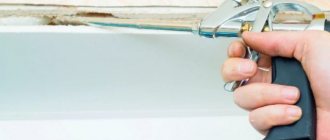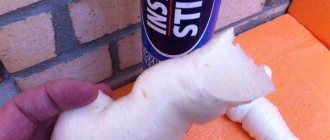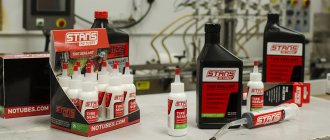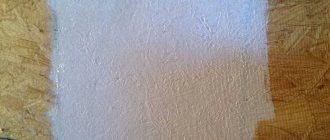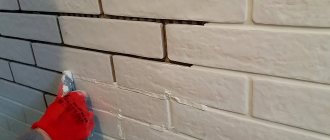A comfortable and cozy home is the natural desire of every person. When reconstructing, repairing or constructing housing, a large role is given to the processes of sealing various structures and openings. To provide reliable protection against moisture on different surfaces (floors, windows, doors, foundations), you need high-quality waterproofing. Waterproof polyurethane foam, which is a new generation building material with good performance characteristics, is suitable for this purpose.
Foam Features
The rapid development of the construction industry leads to the emergence of new materials. These include moisture-resistant polyurethane foam, which is used to seal joints, gaps and voids. The inclusion of certain components in the composition gives the substance moisture-resistant and heat-insulating qualities. Foam quickly replaced mineral wool tape, and installation began to be used instead of bitumen mastic where appropriate. The features and advantages of the material include:
- High degree of resistance to mechanical stress.
- Simplicity and ease of use, good foaming.
- Adhesion to different surfaces, low thermal conductivity.
- Pronounced waterproofing and soundproofing properties.
- Preserving the integrity of the seam by compensating for deformations.
- Resistant to paints and varnishes, easy to clean.
In terms of composition, waterproof polyurethane foam is classified as a polyurethane product. Due to the reaction of polyesters and isocyanates, which occurs a few minutes after surface treatment, the substance polymerizes. Moisture-resistant foams for installation work come in one- and two-component types. The difference between them is the speed of hardening and shelf life.
Atmospheric moisture serves as a catalyst for the polymerization of one-component compositions. Therefore, at negative temperatures or in extreme heat, the air contains a minimum amount of moisture, and before applying polyurethane foam for waterproofing, the surface to be treated must be moistened with water.
Two-component formulations are a tube with two sections with a separating membrane. Components that are under pressure react after the septum is removed. Therefore, the foam hardens quickly when applied; it must be used within 5-10 minutes. Thanks to the separation of components, it became possible to add additives to the installation sealant that improve various characteristics of the foam - density, waterproofing properties, tightness, increase in volume.
Important: Foams have one significant drawback - they react to exposure to ultraviolet rays. Therefore, after application, the hardened mass is puttied, plastered or painted, creating a reliable protective layer.
Alternative options
A wide range of materials are used for waterproofing, each of which has its own advantages and disadvantages.
Ruberoid RKP-350 top layer cardboard 15 sq.m. Photo by Leroy Merlin
1) Roll materials have a combined structure, the base is fiberglass or non-woven materials, onto which bitumen, polymer-bitumen mixtures or synthetic substances are applied. They are distinguished by elasticity and good mechanical strength , as well as a convenient release form, which ensures ease of installation. The main advantages are an excellent combination with any coating: metal, wood, glass and plastic, durability, low cost, and tolerates overheating well.
The disadvantages are the need to prepare the working surface, it must be dry and smooth, the need to treat joints with sealant, and lack of resistance to mechanical stress. A classic example of a product in this category is roofing felt, which has high elasticity and hydrophobicity and is used for roof insulation.
2) Membrane waterproofing (membranes). Polymer films are a new generation material that displaces the usual roofing felt from the sphere of insulation of residential and industrial buildings. Self-adhesive films consist of three layers: polyethylene film, bitumen-polymer layer and anti-adhesive layer. They have high mechanical strength and thermal stability , chemical inertness and resistance to microbial activity. As a result, the materials have a long service life. The only drawback is the high cost . There are flat and profiled membranes that are used to protect objects of various configurations.
What to consider when choosing
Assembly sealants are classified into professional and household foams. Experienced builders use spray cans with a gun outlet to accurately dose the amount of blown composition. Tubes for household use are equipped with a polyethylene tube. When choosing mounting waterproof foam for sealing, take into account the following parameters:
- For waterproofing work, it is important whether the mounting foam allows water to pass through - you need to choose waterproof sealants.
- Output volume – construction teams work according to cost estimates. Masters choose foams with high yield.
- The degree of primary and secondary expansion of waterproof polyurethane foam. This is important for proper filling of voids.
- Fire resistance (fire resistance). There are foams that do not support combustion when exposed to an open flame.
- Operating and operating temperature range. Frost-resistant sealants can be used at sub-zero temperatures.
In addition, craftsmen take into account the drying speed of the foam and the time of formation of the surface film. The quality of a waterproof sealant can be assessed by the appearance of the frozen mass. The proportion of the caliber of the bubbles formed must be maintained. Voids, uneven structure and deformations after complete hardening of the sealant are eliminated.
On video: How to choose polyurethane foam
Purpose and scope of use
Polyurethane foams are characterized by universal applicability for industrial and domestic purposes. The main purpose is to fill voids around fixed structures. After squeezing out of the can, the sealant increases in volume several times, completely filling the foamed space. Moisture-resistant polyurethane foam is suitable for outdoor use and indoor waterproofing. Areas of use of waterproof polyurethane sealant:
- Noise insulation that prevents the penetration of noise from the street, from operating air conditioners, heating, and water heating devices. When filling holes in communication systems, door and window openings, the noise level will be minimal.
- Thermal insulation, the purpose of which is to protect rooms from cold air. The foam prevents the formation of cold bridges in the area of windows and doors, and adheres well to concrete, metal, and wooden bases.
- Waterproofing is the main purpose of polyurethane foam with moisture-resistant characteristics. The material can be used in rooms with high humidity; most often, foam is used for waterproofing bathrooms.
Polyurethane-based sealant is suitable for filling voids in roof structures; it can be used to seal pipe joints. Less commonly, the composition is used as an adhesive component, connecting materials of different structures. Tightness and waterproofing properties are the main advantages of waterproof polyurethane foam.
Attention: The use of foam installation does not replace the need to connect different structures using fastening materials. When working with soft bases, you need to take into account the expansion factor of the composition several times. In order not to deform plastic and plasterboard structures, fixing spacers are installed before foaming.
Useful video
Builders do not recommend saving on insulation materials. Otherwise, they will not be able to boast of working resources and quickly cease to perform their main function. With the proper level of quality, materials last for many years and provide comfortable conditions inside any room. Polyurethane foam is one of the most successful solutions in this area. With a responsible approach to the matter, the result will delight you for many years, just like the sealant and waterproofing itself. Which option to choose is up to everyone to decide for themselves. There are compositions designed for ordinary pipes and heating pipes.
How to work with foam correctly
The technology of working with waterproofing polyurethane foam is to uniformly and quickly distribute the composition over the surface being treated. Before foaming, you need to check the expiration date of the material - indicated on the can. It doesn’t hurt to read the manufacturer’s instructions on under what conditions and for what the sealant can be used. Household foam is distributed using a plastic tube, which is included in the kit; for professional compositions you need a construction gun. Application Features:
- Prepare the surface for processing - sweep away debris, dust, install spacers if necessary.
2. You must wear gloves and a mask, and shake the can of waterproofing material.
3. Moisten joints, gaps or voids with plain water. Remove the protective cap from the can and install a tube or gun.
4. During operation, the foam tube should be held upside down, directing the sealant stream perpendicular to the surface.
5. The space is filled to a third of the depth - after hardening, the composition expands and increases in volume.
After approximately 8 hours, complete polymerization of the sealant occurs, after which the excess mass is carefully cut off. To protect the frozen substance from ultraviolet rays, the sealant is treated with putty, plaster, paint - depending on the type of structure around which the foam is applied.
Household with a pipe and professional with a gun: are there any differences?
Manufacturing companies produce not only foam that differs in the number of components, but also differs in the way they work with it.
In all construction stores there are two types of sealant:
You can distinguish these two types by looking at the cylinders. If the bottle comes with a special tube for blowing in cracks, then this is an ordinary household mixture. It is blown without the use of special devices like a construction gun.
Professional bottles with a special valve for the gun
The two types are different. Professional spray foam can expand 5 times more than standard household foam. This is due to the fact that using a gun, the composition is squeezed out of the cylinder evenly. In the case of household mixtures, many manufacturers resort to a small fraud in the form of an increased amount of gas in the cylinder, which affects the actual volume of the substance. In household cylinders, it is problematic to squeeze out the entire mixture.
Experienced installers recommend not using household foam when installing windows and any other objects in contact with the external environment.
Manufacturers highlight the main areas of purpose of this sealant:
- Noise insulation;
- Seal;
- Installation properties;
- Thermal insulation.
Terms of use
On each package, the manufacturer indicates the conditions for using the material. These parameters may vary slightly depending on the brand and additives included in the waterproof sealant. There are products for interior and exterior work, with an increased level of fire resistance, sound insulation, and frost resistance. Basic rules that should be followed when sealing seams to seal joints and cavities with polyurethane foam:
- The optimal ambient temperature is +20°C, but foam can be used at temperatures from -10 to +30°C.
- Humidity indoors or outdoors should not exceed 60% for the sealant to cure well.
- It is imperative to prepare the work surface before applying the composition.
You can seal seams and gaps in the bathroom, on the street, in the kitchen - waterproof foam does not allow moisture to pass through and reliably “seals” pipe joints and cracks formed after the installation of various structures. If the composition is used at negative temperatures outside, snow, ice, and frost are carefully removed from the surface. When the flammability class is indicated on the foam, such material is suitable for waterproofing in compliance with fire safety rules.
One-component composition
It was the very first to be invented and consisted of a mixture of petroleum derivatives: isocyanate and polyol. When filling, these components were poured one by one into one container, but due to different densities they required mechanical mixing. To push the components out of the tube, the inert gas runs out under pressure, for these components - propylene.
Foam formation
The chemical composition of the components was selected in such a way that when mixed, a chemical reaction occurred, and carbon dioxide began to be actively released, the bubbles of which inside the mixture could increase its volume up to 40 times. But to start a reaction you need a catalyst. This catalyst turned out to be ordinary water. With small volumes of mixture being released from the container, air humidity is quite enough to start and complete the reaction.
Ultimately, a solid polyurethane mixture is formed. But if the volumes of foamed space are large or air access to the product is limited during the reaction, some part does not harden without access to moisture. This has become unacceptable especially when using waterproof mounting foam to seal rooms from moisture.
Note: when working with the product, to prevent gas leakage through the valve, it is best to hold the cylinder upside down, and shake it during use.
When applying, it should be taken into account that cold winter and midday summer air contains less moisture, so the installation areas must be sprayed with water. The optimal ambient temperature for using the product is + 5° - + 25°C. The temperature of the contents is not less than 15° and not more than 25° C.
Waterproof material for bathroom
The main area of use of moisture-resistant material is sealing bathrooms. If there are cracks in the cladding in the room or there is a void between the plumbing and the wall, a puddle will remain on the floor after taking a shower. Consumers reasonably wonder whether polyurethane foam allows water to pass through or not. Does not leak if you choose a moisture-resistant sealant. Features of using foam in the bathroom:
- Problem areas in the lining of the room can be foamed, and tiles, tiles, or a border can be glued on top.
- Moisture-resistant polyurethane foam does not interact with water, which allows you to fill cracks and glue joining fragments.
- The use of waterproof foam prevents moisture from penetrating underneath the tile base.
- The foam is not electrically conductive and has a certain flammability class.
- Waterproof foam for the bathroom can be used to install plumbing fixtures.
Before installing a bathtub, sink, or toilet, you need to replace old pipes with new plastic equipment. Then in a few months you won’t have to deal with repair work. The bathtub is placed on a stand (podium) or legs, and all the resulting joints are sealed with a waterproof foam substance that does not absorb water. In order for the foam to penetrate into the joints between the floor and the bathtub, the gap must be more than 1 cm. After drying, the foam is cut off with a knife and covered with protective (also moisture-resistant) enamel.
Note: Used foam tubes should not be left in the sun or burned. In bathtubs with hydromassage, you need to use high-quality polyurethane sealants that do not accumulate static electricity.
Why do you need to seal your roof?
Sealing the roof will protect the rafter system, as well as the roofing pie, from moisture penetrating inside and from getting the insulation layer wet. It is also worth noting that this process protects the most unprotected places from the effects of aggressive reagents falling along with precipitation. If water gets inside the roof, the rafters will quickly rot and become covered with fungus, even if they are well treated with protective compounds. The thermal conductivity of the roof will also increase, so the house will be too cold in winter and too hot in summer.
Foam manufacturers and material costs
Unlike conventional polyurethane foam, the moisture-resistant composition is presented on the market with a less extensive range of products. The properties and waterproof characteristics of polyurethane foam depend on the component composition. Typically, manufacturers produce foams in a standard and moisture-resistant version so that consumers have a choice. To waterproof bathrooms, you should give preference to more expensive foam that does not absorb moisture. Popular manufacturers of sealants and approximate prices for products:
- Household all-season foam Tytan Professional is a universal composition and costs about 200 rubles.
- Winter polyurethane foam with moisture-repellent properties Profflex is sold at a price of 400 rubles.
- Polyurethane one-component sealant Makroflex for summer work with an applicator, cost from 300 rubles.
- Hauser polyurethane all-season sealant, priced from 200 rubles, has antiseptic properties.
- Universal sealant Soudal is suitable for all surfaces, foam is used for external and internal finishing, price from 365 rubles.
Well-known manufacturers Ceresit, Penosil, Akfix, Kvadro, Atoll produce waterproof foams in summer, winter and all-season versions. The cost of the compositions varies from 150 to 500 rubles. To obtain high-quality waterproofing, you need to give preference to proven sealants of the most popular brands. Waterproof foam does not allow water to pass through - the most important advantage of polyurethane installation materials.
Recommendations for using polyurethane foam (2 videos)
Types and application of waterproof polyurethane foam (20 photos)
How to apply bitumen sealant during construction work
Factories produce roof sealant in various packaging. Metal cans and tubes are the most popular due to their convenience and practicality. The latter are excellent for working with narrow seams and cracks. When applying sealant, you should use a special gun. It will greatly facilitate the sealing process and allow it to be completed without wasting extra mixture. It also allows access to difficult and hidden seams or cracks. The product, sold in cans or plastic buckets, should be applied in layers using a spatula. Excess sealant must be removed. However, it is worth paying attention to the fact that it is advisable to buy such packaging only if there is a large amount of work to be done.
For a certain number of jobs, you can select a specific container with sealant
The peculiarity of bitumen-based compositions is that they cannot be washed off by hand with water. Therefore, it is worth using gloves. If the mixture gets on the skin, it should be removed using organic solvents, for example, white spirit. You need to pour it onto a small piece of rag and carefully wipe the sealant off the body, and then wash the skin area with soap and water. You can also use a makeup remover to remove the mixture.
